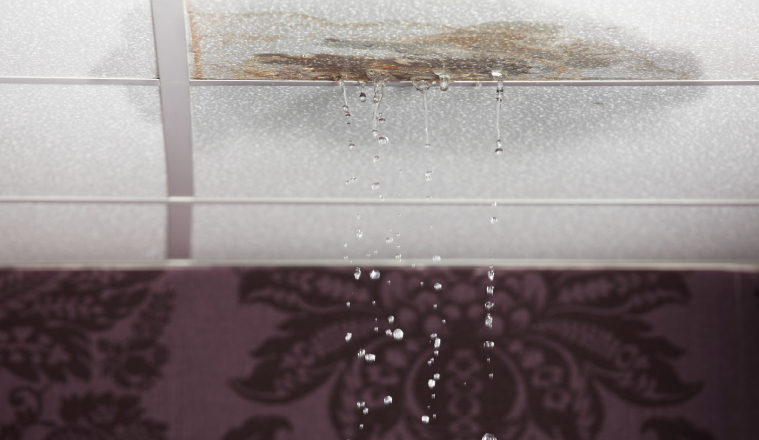Dampness and Leaks are prolific building defects and account for over half of the investigations into building defects. Dampness adversely affects living/working conditions and the health of building occupants; the resultant damage to materials and structure can lead to considerable costs in remedial works.
Common regional construction techniques such as the use of half brick external panel walls to multi-storey framed buildings; the inadequacy of damp/water proofing barriers in walls/floors/roofs have led to many dampness complaints. Tracing the source of dampness and leaks requires careful diagnosis and a thorough understanding of the physical and chemical principles involved.
The specific objectives of the course are to:
- Recognise Different Types of Dampness and Relate them to the Source of Moisture
- Understand the Effects of Moisture on Material and Component Performance
- Appreciate Procedures for Investigating Dampness and Instrumentation Involved
- Learn Materials and Methods of Repairing/Resolving Dampness and Leaks in Buildings.
Sources of Dampness and Leaks in Buildings
- Building Defects: Cracks & Dampness
- Dampness in Buildings
- Investigating Dampness
Condensation
- Principles and Physics
- Surface, Interstitial and Transient Condensation
- Control of Condensation
Waterproofing and Sealant Materials
- Waterproofing
– Introduction
– Types of Waterproofing Materials
– Selection Guidelines
– Waterproofing Principles
– Properties & Application
– Common Defects and Failures - Sealants
– Introduction
– Material Selection & Application
– Types of Sealants
– Common Defects and Failures
Dampness in Basements and Substructures
- Introduction to Rising Damp
- Diagnostics Methods and Equipment
- Repair and Remedial Methods
Rain Penetration/Leaks Through Walls and Roofs
- Walls
– Types of Walls
– Masonry Walls
– Facade Design
– Absorbency & Joint Efficiency
– Sealants
– Windows & Doors - Roofs
– Roof Failures
– Pitched Roofs
– Flat Roofs
Dampness/Leaks Through Floors & Wet Areas
- Concrete Floors & Wet Areas
- Sources & Location of Dampness & Leaks
- Material Selection & Design Guidelines
- Installing Waterproof Membranes
- Rectification & Repair Methods
Dr Quah Lee Kiang FRICS
Dr Quah is the Director of the Real Estate & Construction Centre and the Real Estate & Construction Academy in Singapore. She has extensive regional and international experience in Project and Facilities Management & Maintenance research, advice and academia.
Dr Quah led the EU funded project BE4213 Condition Assessment and Maintenance Strategies for Buildings and Building Components, which among other things, sought to develop an objective building condition assessment system. This project formed part of ongoing research over the last 20 years which culminated in Dutch Standard NEN 2767 on Condition Assessment of Buildings, believed to be a ‘world first’.
Dr Quah’s professional and research affiliations include being Coordinator of the International Council for Research and Innovation in Building and Construction (CIB) Working Commission 70 on Facilities Management and Maintenance for a decade and past President of the Chartered Institute of Building Singapore Centre. She was also a member of the Royal Institution of Chartered Surveyors (RICS) Asia Board, Singapore Board and Asia Pacific Sustainability Board.
Dr Quah was conferred an Honorary Fellow by Oxford Brookes University for her work in real estate and construction education and the unusual impact her career has had on this particular academic field in Asia.
Er Yong Shan ChiFRICS
Mr Yong, a Professional Engineer (Civil) has extensive design and construction management experience. He started in design work with the HDB, moving on to the private sector where he was involved in foundation engineering and precast concrete work. He was instrumental in introducing the Autoclaved Lightweight Masonry Wall system and was in the forefront of the UOB Tower project, the first building with unitised Curtain Walls. He has been involved in D&B projects in Singapore and China providing project management and engineering design support. Mr Yong has developed learning material for CITI and lectures in modules such as Building Envelope and Precast Concrete water-tightness for them.
Option 2 (Live Streaming via RECC Elearning Portal)Username and password will be assigned on receipt of registration and course fees
$615 nett per person. Course fees includes full colour course documentation and refreshments at tea breaks.
Important Note:
In addition, NTUC members may claim up to $250 under the Union Training Assistance Programme (UTAP).
The course has been approved for 7 PDU units under the PE Board Continuing Professional Development programme. Attendance certificates will be issued; they may also be suitable for meeting the CPD requirements of other relevant professional bodies not operating a CPD course accreditation system.
The course will benefit those who have a vested interest in buildings including:
- Developers
- Building Owners
- Government Officials
- Architects
- Engineers
- Project Managers
- Quantity Surveyors
- Contractors/Sub-Contractors/Suppliers
- Property Managers
- Facilities Managers
- Maintenance Managers
- Management Corporations
- Town Councils
- and Others
Cancellations made one week before the scheduled commencement date of the course will be subjected to an administrative fee of $100.00. The full fee of $615.00 will be payable thereafter for any cancellation; substitutions can be made at any time.
Mr Ken Chew
Tel: 6563 4166
Fax: 6563 4156
E-mail:exectrg@recc.com.sg
It may be necessary for reasons beyond RECC’s control, to change the content and timing of the programme and the identity of the course leader/s.
1 Day Training Course
24th Run
Dampness and Leaks in Basements & Superstructures
Causes, Investigation & Repair
Qualified for 7 PDUs by PE Board
$615.00 / person
Course Date & Venue:
08 April 2024, 09:00am to 18:00pm
Course Objectives
Recognise Different Types of Dampness and Relate them to the Source of Moisture Understand the Effects of Moisture on Material and Component Performance Appreciate Procedures for Investigating Dampness and Instrumentation Involved.
Important Note:
In addition, NTUC members may claim up to $250 under the Union Training Assistance Programme (UTAP).



